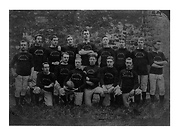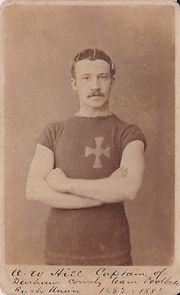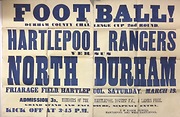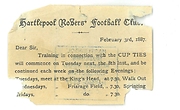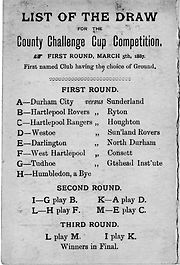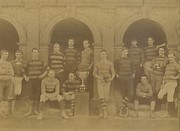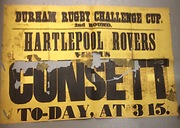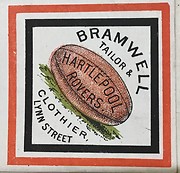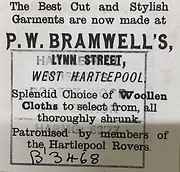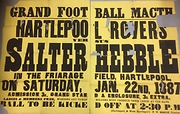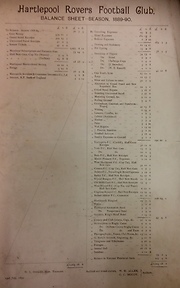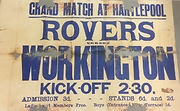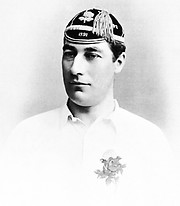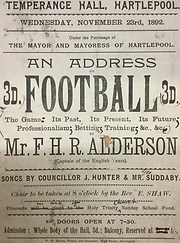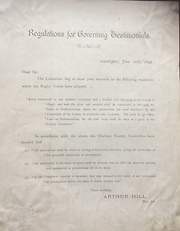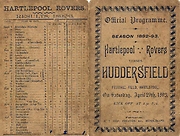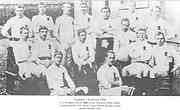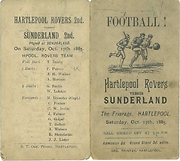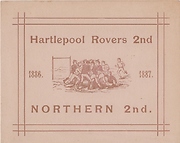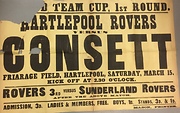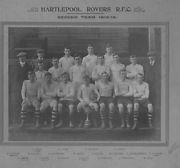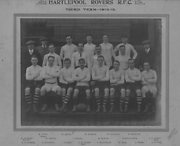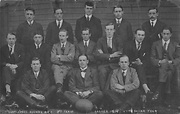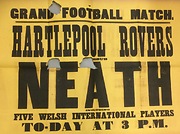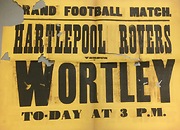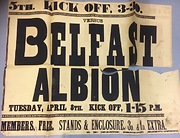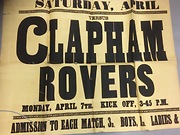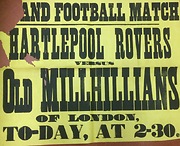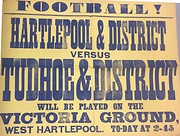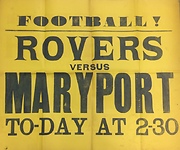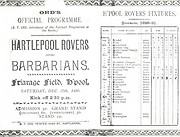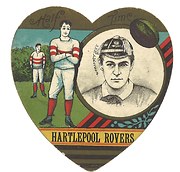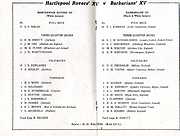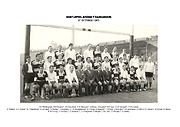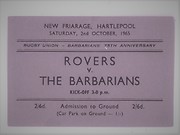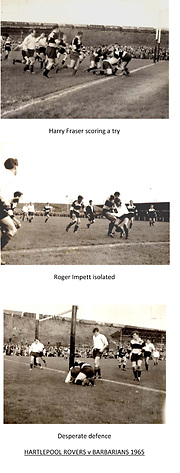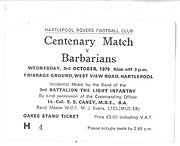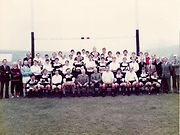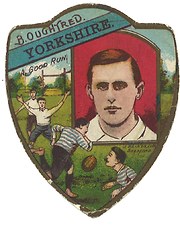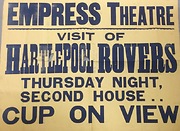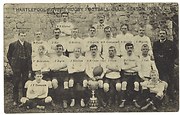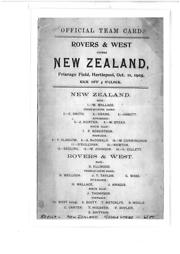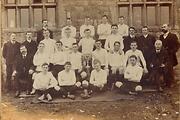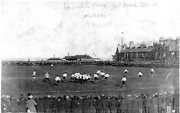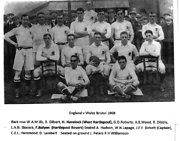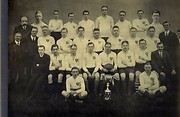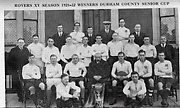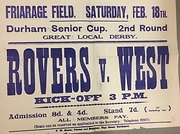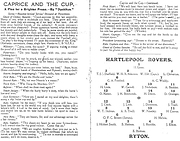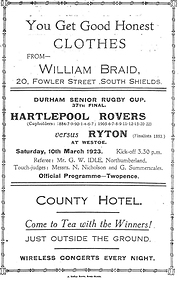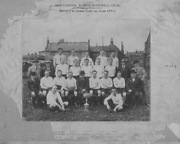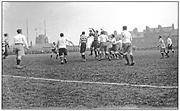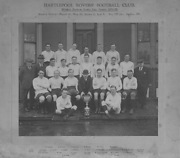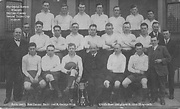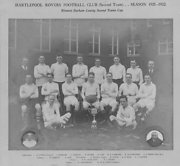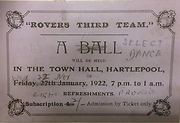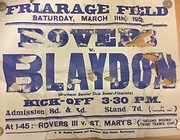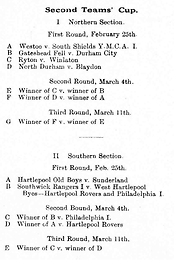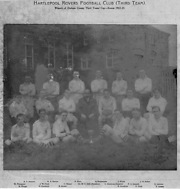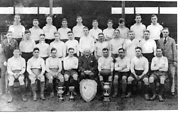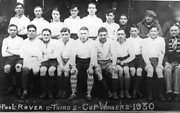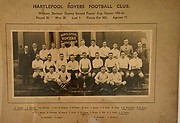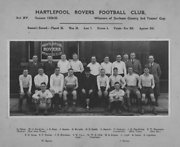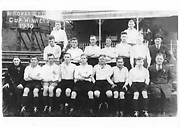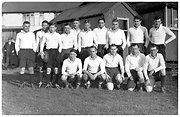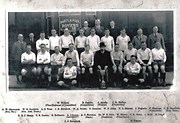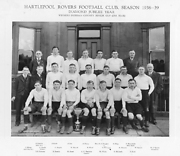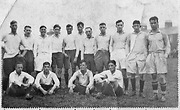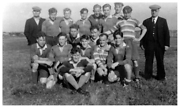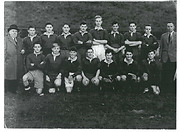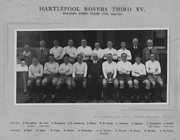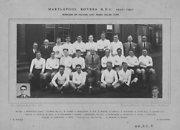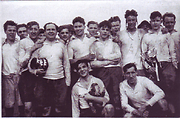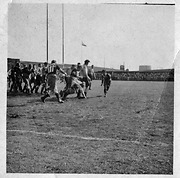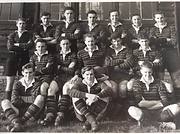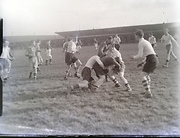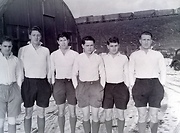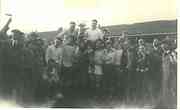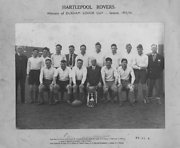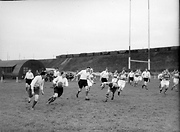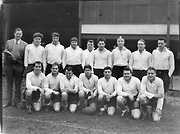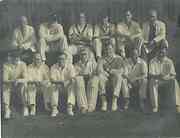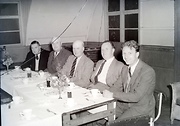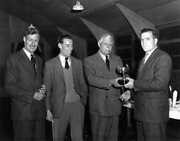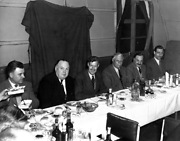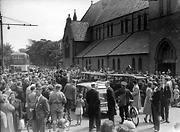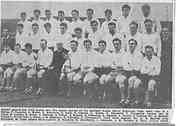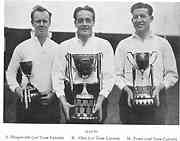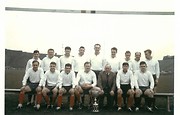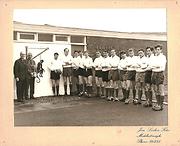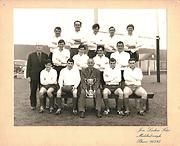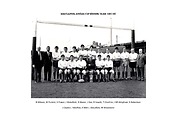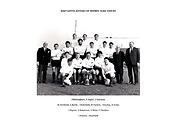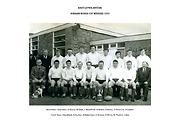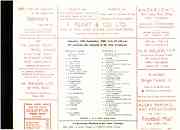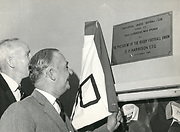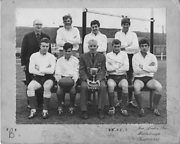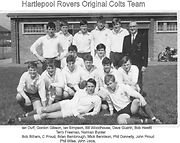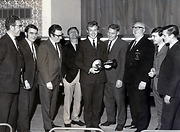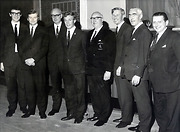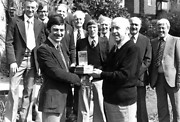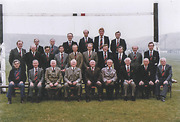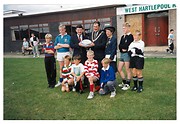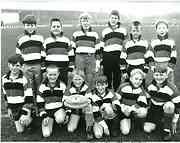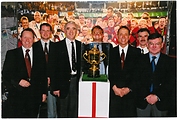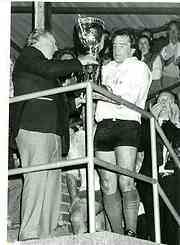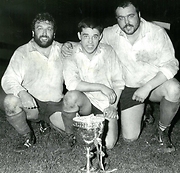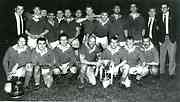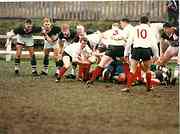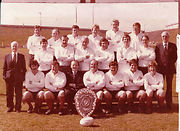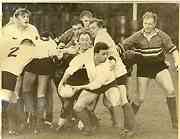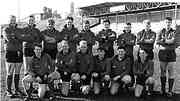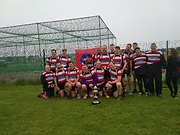 Hartlepool Sports & Leisure
Hartlepool Sports & Leisure
- Cinemas, Theatres & Dance Halls
- Musicians & Bands
- At the Seaside
- Parks & Gardens
- Caravans & Camping
- Sport
 Hartlepool Transport
Hartlepool Transport
- Airfields & Aircraft
- Railways
- Buses & Commercial Vehicles
- Cars & Motorbikes
- The Ferry
- Horse drawn vehicles
 A Potted History Of Hartlepool
A Potted History Of Hartlepool
- Unidentified images
- Sources of information
- Archaeology & Ancient History
- Local Government
- Printed Notices & Papers
- Aerial Photographs
- Events, Visitors & VIPs
 Hartlepool Trade & Industry
Hartlepool Trade & Industry
- Trade Fairs
- Local businesses
- Iron & Steel
- Shops & Shopping
- Fishing industry
- Farming & Rural Landscape
- Pubs, Clubs & Hotels
 Hartlepool Health & Education
Hartlepool Health & Education
- Schools & Colleges
- Hospitals & Workhouses
- Public Health & Utilities
- Ambulance Service
- Police Services
- Fire Services
 Hartlepool People
Hartlepool People
 Hartlepool Places
Hartlepool Places
 Hartlepool at War
Hartlepool at War
 Hartlepool Ships & Shipping
Hartlepool Ships & Shipping

Hartlepool Rovers F.C.
Details about Hartlepool Rovers F.c.
Hartlepool Rovers Football Club in images, from their start in 1879.
Please go to button 1-9 for a chronological list of photographs and information relating to Hartlepool Rovers FC.
Location
Related items :
 1882 - 1894 - Hartlepool Rovers and the early days of the Senior Cup
1882 - 1894 - Hartlepool Rovers and the early days of the Senior Cup
Images from Rovers from before they took over Hartlepool FC in 1883 and their exploits in the Senior Cup. It is difficult for us today to imagine the effect the introduction of the Durham County Senior Competition in 1881 had on Rugby in the area.
Within a few short seasons of its introduction clubs had organised their teams more formally to ensure they won games and ideally the Cup. By 1885, Durham City, having defeated Boldon, Humbledon and North Durham, reached the Final against Sunderland Rovers. The game was played at the Friarage Field , here in Hartlepool, in front of a crowd of 9,000. The numbers swelled by train excursions from Sunderland, Shields, Newcastle, Darlington, Stockton and Middlesbrough to see City lift the Cup for the first time.
The Cup was not without its detractors and the Competition was withdrawn in 1886 but restored a year later when Rovers won for a second time (they had defeated North Durham in 1884) beating Humbledon in 1887.
The 1888 Final saw Durham City overcome Rovers on Ashbrooke before a crowd of 10,000 spectators, 1200 had arrived from Durham by a special train. A Darlington newspaper of that era reported “that the news of the defeat of Rovers was received in Hartlepool with dismay, the blinds were drawn, many places wearing an air of mourning, whilst one enthusiastic supporter of Rovers an outfitter at West Hartlepool, edged the telegram announcing the feat with a deep border of black”! The outfitter referred to was probably Bramwells of lynn Street and their Business card appears in this Gallery.
Rovers soon revived and went on to play in a great number of Finals, this early period being particularly successful featuring in eight of the Finals in the decade covered by this Gallery. The Robert Wood collection contains a number of posters advertising games in the Competition which was always held in March, a simpler and very successful format that was tried in recent times with success.
More detail » 1886 - 1895 - Schism in Rugby
1886 - 1895 - Schism in Rugby
The question of “reward” or redress for “broken time” had been a source of contention within the Game in the North from its earliest of times, with the matter being raised at RFU AGMs from 1886, the question came to a head in 1893 when the RFU declined to pass a motion to allow “broken time” payments. By 1895 a group of clubs from Yorkshire, Lancashire and Cheshire met in Huddersfield to form the Northern Union to form what became the Rugby League – initially they applied to join the RFU as a body, but their requests were declined.
Clubs in the North East largely decided to stay with the RFU, but the split must have had a big effect on major clubs such as Rovers, as can be gauged from the clubs listed in the Rovers v South Shields programme (see below), that would no longer be available. Several clubs from our area followed the Yorkshire, Cheshire, and Lancashire clubs in joining the NRU, including South Shields and the Wallsend club only to find they were out of business in a short time.
The Robert Wood collection contains several items that also show how the arguments on money were current at the time, an Address from Fred Alderson covering many aspects of the “modern” problems in the game is in this Gallery. In addition, a letter from Arthur Hill, then County Secretary, sets out the process for Testimonials, another area that by the late 1890s produced fears within the RFU that the Welsh Union may join the Northern Union!
It is also of interest to compare the two Balance Sheets on this site, one from 1890, the second just a few seasons after the split in the Game, the former lists how the various gate monies, both inward and outward, were disbursed to/from clubs. The latter from 1898, only has gate monies received plus a list of guarantees for the Rovers, Welsh, and South Western tours.
The immediate effect of the formation of the Northern Union can also be gauged from comments in Rovers 1896 AGM when they noted the cancellation of game with Hunslett, St Helens, Halifax, and Oldham. They succeeded in arranging alternative games with Pemberton (Manchester), Jedforest, Edinburgh Wanderers, Aspatria (Cumbria) and Leicester but the burden was great as Rovers were obliged to pay heavy expenses and large guarantees to the visiting clubs. The Leicester match poster from this season is also included on this site along with a few Clubs from Scotland who also made their visits in the seasons following.
More detail »
 1886 - 1914 - Hartlepool Rovers 2nd & 3rd XVs
1886 - 1914 - Hartlepool Rovers 2nd & 3rd XVs
A selection of items from the Collections reflecting the Rovers 2nd XV and their activities in the early decade of the Club. It is also well worth a glance at the 2nd/3rd Teams Cup records to see just how successful they were on the Knockout Rugby front. Although founder members of the Pyman League fielding either their 2nd or 3rd XVs they did not win the Cup until the mid-thirties.
Also on this Gallery is a set of images from the pre–Great War era stating from Season 1906-07 when the 2nds and 3rd won their Cup Comps. 1912/13 ended with them holding the Senior, 2nd, and 3rd Teams cups once again.
More detail » 1888 - 1892 - Christmas, New Year Easter & other attractions
1888 - 1892 - Christmas, New Year Easter & other attractions
Posters & Images from the period when the game of Rugby was at its most popular in the two towns, with huge crowds attending games. During the “Bank Holidays” of any particular season, Rovers produced a number of touring sides, including the Maori tourists in November of 1888, as part of the entertainment, clubs arriving would be offered a guarantee to appear usually a lump sum or possibly be given a share of the Nett gate to cover their costs.
As can be seen from the Fixture cards, Rovers as did West, Old Boys and Rangers, also undertook tours various part of the country, no doubt under the same financial arrangement.
More detail » 1890 -1990 - Hartlepool Rovers and the Barbarians Connection
1890 -1990 - Hartlepool Rovers and the Barbarians Connection
Formed in 1890, the Barbarians Club is one of the most famous names in World Rugby, and Rovers provided the first ever opposition on 27th December, 1890. Originally restricted in membership to Oxbridge players and Internationals it soon widened its remit and a call up to the Club still remains a great honour for any player. Games against Rovers were a feature of the side until 1902 when they played Rovers on the 5th April drawing 3 all and then on the following Monday, West beat them in their only game with the West Club, by 25 pts to 4. The tours to the North only lasted 12 years but also included matches with Old Dunelmians, South Shields (both now defunct), Percy Park, and Rockcliffe (now Whitley Bay Rockcliff)
More detail »
 1900 - 1913 - Hartlepool Rovers the Senior Cup & International Scene -
1900 - 1913 - Hartlepool Rovers the Senior Cup & International Scene -
A series of images highlighting the outstanding run by Rovers in reaching every Senior Cup Final between 1905 and 1913, every one resulted in a win except for 1910 when they went down to Durham City on Ashbrooke. The years 1905-09 saw the side under the Captaincy of George Carter, who during the same period was a regular member of the Durham County Championship sides and played against the all Blacks, South Africa and Australia.
The club declined to take part in the 13/1914 Competition but had the satisfaction of defeating the winners Westoe on the two occasions the sides met that campaign.
More detail » 1920 - 1927 - Hartlepool Rovers - Cup Successes with West Tyne.
1920 - 1927 - Hartlepool Rovers - Cup Successes with West Tyne.
The 1922 Senior Cup Final featured a win for Rovers over City at Westoe, the first of five consecutive wins in the Cup, the era was marked by Four Final appearances against teams from the North West of Durham County.
Three of the longest serving clubs on the County Rugby scene are Ryton, Winlaton Vulcan’s and Blaydon, all situated in the West Tyne area of the Durham/Northumberland border. They have featured on the Fixture lists of local clubs from the early 1880 but were not so prominent on the Cup scene.
However, during the period 1923-1927, one or other of them made an appearance in the five consecutive Senior Cup Finals of that period, on four of those occasions Rovers was the opposition.
In addition, the Second Teams Cup Final of 1926 also featured the Vulcan’s against Rovers whilst their near neighbour Chopwell (the village was also known as “Little Moscow” for its support at one time for the Communist Party) made it to the 1926 Junior Cup Final against Seaman’s Institute). Plus the colliery based side Greenside from near Ryton who carried off the Junior Cup in 1921 (beating Furness Athletic on the Frirage Field 11-3) and then becoming runners up in the 1923 Second Teams Cup Final against Durham City. Not forgetting that the then newly revived Consett won the Junior Cup in 1927 and the 2nd Teams Cup in 28 to become a Senior Club.
More detail »
 1922 - 1935 - Hartlepool Rovers - 2nd and 3rd XV Cup Winners
1922 - 1935 - Hartlepool Rovers - 2nd and 3rd XV Cup Winners
Images of the successful Rovers 2nd and 3rd XV's that carried off their County Cups in season 21/22 & 22/23 seasons and ran their own social events to keep the team spirit going! After little Cup success in the following decade they revived in 1930 to take the County 3rd Team Cup plus other silverware and the club manged to raise a Fourth XV that reached the 1930 Shield Final.They enjoyed another double success in 1933/35 seasons lifting the 3rd Teams each season. t was however in the 2nd Teams Cup that they had a remarkable run the 1930s winning the cup on 6 out of seven Finals
More detail » 1930 - 1939 - Hartlepool Rovers 1st XV - Silver seasons
1930 - 1939 - Hartlepool Rovers 1st XV - Silver seasons
Images from the 1930's showing the successful sides that annexed the Senior Cup in 1930, 1935 and then 1939, the latter date also marking the Diamnd Jubilee of the founding of the Club.
More detail » 1942 - 1951 - Hartlepool Rovers 2nd & 3rd XV - Cup and Fixture scene
1942 - 1951 - Hartlepool Rovers 2nd & 3rd XV - Cup and Fixture scene
A series of images for Rovers 2nd and 3rd teams, during the 40s when the game was restarting after wartime. The decade ended with the usual flurry of Cup sucesses
More detail » 1950 - 1960 - Hartlepool Rovers 1st XV in action
1950 - 1960 - Hartlepool Rovers 1st XV in action
Here is a gallery of images from the Hartlepool Mail Archive which show Rovers in action against various Clubs in the 1950s Each picture has been dated for “working title” purposes and we would welcome any further information as to the exact date or score for the various items, or indeed the names of players or the Referees!
More detail »
 1952 - 1954 - Hartlepool Rovers - The social side of life
1952 - 1954 - Hartlepool Rovers - The social side of life
The 'Mail Photo archive has produced a couple of pics fro Rovers social side plus the popular cricket X1 that ran for some years.
More detail » 1960 - 1970 - Hartlepool Rovers - Silver Seasons
1960 - 1970 - Hartlepool Rovers - Silver Seasons
Images from the various Senior & Second Teams Cup capaigns throughout the 1960's.
More detail » 1966 - Hartlepool Rovers open new Clubhouse
1966 - Hartlepool Rovers open new Clubhouse
Another milestone in the Rovers Club history was reached in 1966 when the new Clubhouse was built to replace the much loved Nissen Huts. The event was also marked by a game with the Scottish Co-Optimists to mark the special day.
More detail »
 1967 - Hartlepool Rovers Colts
1967 - Hartlepool Rovers Colts
Hartlepool Rovers ran a successful Colts side during the 1960s run by Bob Hewitt and his sister Hilda, this photo dates from 1967 and shows the Seven that won the R L Harrison Sevens that season against Hartlepool B.B.O.B.
The Sevens Trophy was originally the Hartlepools Junior Cup and had been discovered in an attic and put up for competition in remembrance of Bob Harrison.
More detail » 1971 - 2003 - Hartlepool Rovers - Presentation and Social events
1971 - 2003 - Hartlepool Rovers - Presentation and Social events
Images from the various Celebrations since the RFU Centennial in 1970/71 and the arrival of the World Cup.
More detail » 1980 - 1995 - Hartlepool Rovers - Senior Cup Finals
1980 - 1995 - Hartlepool Rovers - Senior Cup Finals
After dominating the Senior Cup scene for most of the 1970s, to be overtaken during the 80s by West, Rovers century long run in the Senior Cup came to an end with a defeat at the hands of Stockton on the New Friarage in 1994 by 16 pts to 14.
A year later heralded the arrival of the seamless game including professionalism and major upheavals in the role of the Knockout Cups within the County, the County Cup scene has never been the same since with only a couple of the same clubs dominant in every cup season by season.
More detail » 1981 - 2018 -Hartlepool Rovers 2nd XV & 4th XV Teams -
1981 - 2018 -Hartlepool Rovers 2nd XV & 4th XV Teams -
Images from the Rovers win over Horden II on Horden's Welfare Park Ground in the 90th anniversary Pyman Final plus their win in the 2018 Tens Pyman Final. Plus a win n the Fourth Teams shield from 1981
More detail »




